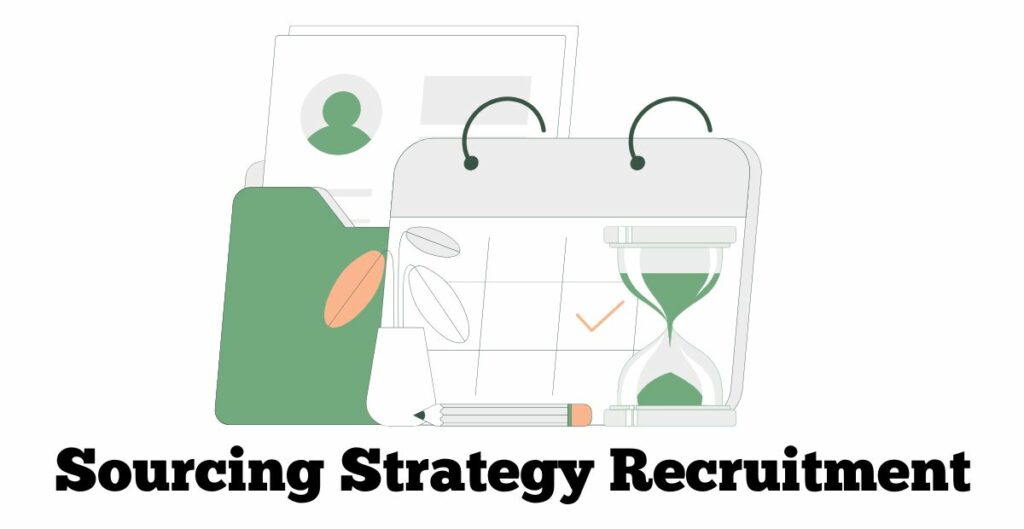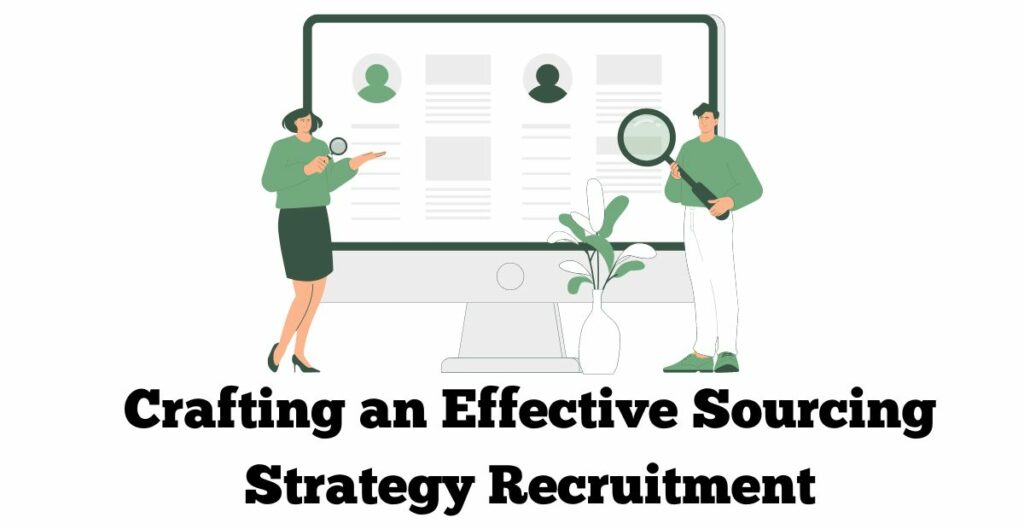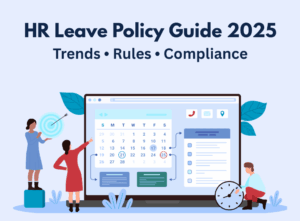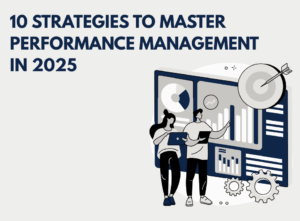Introduction of Sourcing Strategy Recruitment
Sourcing strategy recruitment is one of the most dynamic domains that must continually be learned in the competitive market of recruitment. Regardless of your level of experience—whether you are a senior HR professional conversant with the ropes of talent acquisition, or just venturing out into the sourcing arena—the foundation of a reliable strategy is a non-negotiable focus. This guide aims to familiarize the readers with the crown of recruitment and how using HRMS (Human Resource Management System) together with the payroll software can take your sourcing to new heights.
- Understanding the Importance of Sourcing Strategy Recruitment :
- The swift-paced recruitment landscape brings into play talent acquisition, where the challenges seem to escalate almost overnight. The most valuable asset for recruiters at this point is to have a well-designed sourcing strategy recruitment that they can use to stand out from the crowd and get ahead in this race for talent. Here’s why it matters:
- Quality over Quantity: A sourcing strategy recruitment approach provides recruiters with an opportunity to screen employees for a particular talent that is aligned with the organization’s needs rather than collecting a huge number of irrelevant applications. Identifying and attracting the right talent as well as the improvement of the calibre of hires could be done organizationally by this principle.
- Cost Efficiency: Smart sourcing policies facilitate less hiring spending by decreasing the need for pricey publications hung on the job market or employment offices. Besides, they can use the internal resources efficiently and attract the sizes of talent sources more synchronously than before.
- Enhanced Candidate Experience: A tactful, sourcing strategy recruitment can boost the candidate experience by making sure timely communication, loyal interactions, and a convenient application process. In this way, not only the employee brand is enhanced but also the top choice of the best candidates.
- How HRMS and Payroll Software Can Enhance Your Sourcing Strategy Recruitment Efforts:
- HRMS and payroll programs, besides administrative functions, are real partners in the recruiting process, enabling companies to make decisions guided by data. Here’s how they can elevate your sourcing efforts:
- Centralized Data Management: Human Resource Management System platforms have been designed to help store candidate information in a single place, thereby eliminating the chances of mixing up any application. Working with software for payroll allows direct access to personnel information, thus providing a detailed sourcing approach based on employees’ skills, experience, and pay preferences.
- Automated Processes: From resume screening to the scheduling of interviews, automated features within an HRMS system can make routine tasks much quicker and less of a time investment for the recruiter to manage; thus, the recruiter can concentrate on what is vital, such as candidate engagement and relationship building. In addition to boosting the recruiting process, it also helps reduce labour costs at the output.
- Data-Driven Insights: Through the analytical data and reporting features of HRMS and payroll software platforms, this platform allows for valuable discoveries to be made. Recruiters can use these insights to detect trends and evaluate the efficiency of recruitment channels and they can consequently make arrangements for the allocation of resources and strategy correction.
Crafting an Effective Sourcing Strategy Recruitment
-
Defining Your Sourcing Strategy Recruitment Goals and Objectives:
Bear in mind that before the heads on sourcing activity, it is essential to articulate and specify the sourcing strategy recruitment goals and objectives. Specific functioning goals may include filling up a particular role, expanding the talent pool, or addressing diversity and equality dimensions. The well-established plan for driving sourcing efforts will ease your efforts.
-
Identifying Target Candidate Personas:
Knowing your Himalayan salt light ideals profiles would be useful for working with your candidates effectively. Design candidate personas that demonstrate the demographics, skills, experience and other valuable elements to be considered. This way puts the proper candidate alignment with your firm at the epicentre, making the sourcing process more responsive to your hiring needs.
-
Leveraging HRMS Data for Informed Decision-Making:
The HRMS is the treasure house containing valuable data that will drive decisions about sourcing in your organization. Evaluate the historical recruitment metrics, for instance, Time-to-hire, Source-of-hire, and Candidate quality to know the trend and its pattern. Leverage these insights to optimize your selection of sources, make intelligent resource decisions, and focus on sales channels that yield results.
-
Incorporating Payroll Software Insights for Competitive Offerings:
The payroll module digested data could provide useful information concerning salary trends and industry norms. Evaluating the market competition through the acquisition of salary ranges, benefits packages, and the offering packages enables you to position your organization in such a way that you compete favourably in the market and draw in top talent. Besides, the purpose of orienting the compensation strategy along the market demands is keeping you high in the level of the talent market.
Diversifying Sourcing strategy recruitment Channels
-
Exploring Traditional Recruitment Methods:
Still, in today’s digital era, conventional methods like placing ads in print media, attending job fests, and practising networking have an edge. The top of my mind is why I choose media platforms as alternatives to candidate sourcing on online platforms. It exposes your organization to a huge pool of untapped candidates who may not be active on job search platforms online and is very supplementary to your digital sourcing efforts.
-
Harnessing the Power of Digital Platforms and Social Media:
The appearance of digital mechanisms and websites has been even more of an interruptive factor to the way sourcing strategy recruitment is currently being conducted. Tap into LinkedIn, Indeed, and Glassdoor, the most sought-after job-boarding networks to reach out to a broad base of potential applicants. In addition to this, be socially active on Facebook, Twitter, and Instagram to share employer brands, engage with potential candidates, and post job openings.
-
Utilizing Employee Referral Programs:
Employee referral programs are one of the easiest and most powerful weapons in your arsenal: they give you access to your company’s people’s extensive social networks. Urge staff to recommend some skilled candidates for vacant jobs and provide bonuses, recognition, or career enhancements as a reward for their actions. However, this is not all that it does. These platforms also usually attract people who are a good fit for your organization and raise engagement levels.
-
Partnering with sourcing strategy Recruitment Agencies and Headhunters:
Recruiting agencies and headhunters are important partners in your sourcing initiatives, particularly for positions where you can’t find enough quality candidates on time. Behind their conversations are his intelligence, his charisma, and the esteem in which everybody holds him. And that is a powerful combination. Make use of recognized companies within your sector or niche that have expertise in human resources so that you can access their human resources and the hiring processes are integrated.
Leveraging Technology for Sourcing Success
-
Optimizing Applicant Tracking Systems (ATS) within HRMS:
By incorporating Applicant Tracking Systems (ATS) in HRMS, sourcing strategy recruitment activities are put in the quick flow and done simultaneously. This is achieved through centralization of candidate data, automation of workflows, and police collaboration among hiring team members. Take advantage of your ATS capabilities by making the use of customization of workflows, creation of email templates for automation, and report generation to track recruitment’s KPIs and enhance business efficiency.
-
Integrating AI and Machine Learning for Candidate Screening:
By execution of AI and machine learning technologies resume screening can be changed in such a way that it will be able to search for relevant keywords and predict a candidate’s suitability based on historical data. Incorporating AI-enabled screening tools that will enable quicker filtering of huge volumes of applications, pinpointing ideal candidates, and minimizing hiring time while ensuring the quality of the staff members.
-
Implementing Automation for Streamlined Sourcing Strategy Recruitment Processes:
Automated solutions can help with automating some of the job activities, for instance posting a job opening on several external sites, reaching out to potential candidates, or scheduling interviews. The utilization of automation software assists in hyper-targeting and posting job openings across multiple sites simultaneously, as well as forwards out personalized and engaging emails, emails that help manage interview logistics and that make the process very simple. The recruiters can thus be free from the routine jobs and can rather work on building rapport with the candidates and providing them with enhanced candidate experience.
-
Enhancing Candidate Experience through Mobile Recruitment Solutions:
In a mobile-dominated generation, presenting an accessible and appealing mobile recruitment process is deliberately crucial to obtaining and keeping candidates. Develop mobile career websites, applications, and mediums to engage job seekers who are searching for jobs through their smartphones or iPads. Mobile recruitment solutions that allow candidates to discover posting jobs, apply for jobs, and exchange messages with recruiters become an easy way of providing a good experience for applicants and a boost in application conversion ratios.
Analyzing and Refining Your Approach
-
Monitoring Key Metrics and Performance Indicators:
Develop your sourcing strategy recruitment, and track key metrics, and performance indicators to analyze the performance of your strategy. Key metrics could be filled with the timeline, referring to the source of hire, cost per hire, the quality of applicants, or candidate conversion rate. Periodic monitoring of these metrics enables you to gather a cause-and-effect approach to your sourcing activities that helps in achieving efficiency.
-
Conducting Regular Audits of Sourcing Channels:
Run regular checks of your sources of supply to analyze how good they are and whether they give you good returns on investment. Measure the outcome of several channels like applications, social media networks, worker recommendations, as well as recruitment agencies, in bringing quality candidates. Knowing the top performers’ channels that are making you a good result can help you budget the resources to follow the optimization of your sourcing strategy recruitment.
-
Soliciting Feedback from Hiring Managers and Candidates:
Collect the feedback from the team who recruits and who are targeting to gain precious clues about the recruitment process. Get senior hiring managers involved in the process and conduct follow-ups in terms of various factors: quality of candidates, timeliness of hire, and overall satisfaction with the sourcing strategy recruitment As an individual, ask candidates to give their input on the application process, interview process, and recruiters communication. As suggested by this feedback, take the opportunity to evaluate common pain points, deal with issues, and do the needed work to improve the recruitment process for the benefit of all the actors.
-
Iterating and Improving Your Sourcing Strategy Recruitment Over Time:
Sourcing is one of the activities that needs regular modification and advancement throughout the effort. These measures could include utilizing metrics for monitoring and conducting audits, as well as, inviting feedback from interested parties to continuously update and revise your sourcing strategy recruitment. Try out diverse sourcing channels, technologies, and approaches, that will allow you to adapt to a dynamic market and candidates’ requirements. Regularly assess the implications of the above changes; then, adopt the strategies to stay adaptable and relevant in recruiting.





